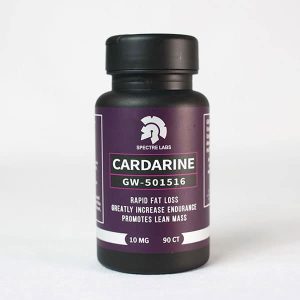Breaking a weight loss plateau is not easy and unfortunately, there’s a point that most people will reach – the weight loss plateau. That’s the point when it seems like it doesn’t matter what you’re doing in your cutting cycle, the weight loss won’t occur. You need to follow a proper diet plan and have a great workout plan. But despite the fact that you already do, you just don’t understand how to break the weight loss plateau when you are cutting. Luckily, you’re now reading this article. It will help you break your weight loss plateau and will also help speed up the progress if you’re just starting to cut down.
In the end, I know that you feel as if you’re doing everything right. You follow the right workout plans, you’re eating well, and you’re hitting the gym often. (If you’re not, how do you expect to lose weight anyway?) But as long as you’re doing it all, you may wonder what else you can do to finally get over the weight loss plateau and kick start again your cutting.
 To be completely honest – we do not have a magic solution. Instead, SARMS.to offers almost magic compounds that can help you melt off that fat. We provide weight loss compounds such as SR9009 (Stenabolic), GW501516 (Cardarine), and MK2866 (Ostarine) that will surely work like magic when it comes to breaking a weight loss plateau and speeding up the process. Add such compounds to your regimen, and you’re surely going to kickstart the cutting cycle.
To be completely honest – we do not have a magic solution. Instead, SARMS.to offers almost magic compounds that can help you melt off that fat. We provide weight loss compounds such as SR9009 (Stenabolic), GW501516 (Cardarine), and MK2866 (Ostarine) that will surely work like magic when it comes to breaking a weight loss plateau and speeding up the process. Add such compounds to your regimen, and you’re surely going to kickstart the cutting cycle.
But with or without such compounds, understanding human metabolism will surely set you on the right path to breaking through the weight loss plateau. There’s a lot to understand, including the combination of energy in vs energy out including others.
What is a Cutting / Weight Loss Plateau?
During the cutting phase, hitting a weight loss plateau means that you’ve hit something that feels like a wall in your cutting progress. Despite your efforts in dieting and training, you do not see any weight loss for at least 2 weeks. Of course, the weight loss plateau refers to the period when you’re putting in the effort, otherwise, it is not a plateau, it is just a lack of effort. However, you also consider it a plateau when you do not see any progress for at least 2 weeks.
That’s because our natural weight can fluctuate slightly across days or even weeks. That is due to a variety of factors such as water retention and bowel movements. But if you’re purposely trying to lose weight and burn fat, yet, your weight loss has stopped or slowed down A LOT for at least 2 weeks, despite your efforts, then it means you’ve hit a weight loss plateau.
Yet, it is important to understand that during a cutting cycle, hitting a plateau is normal. A lot of experienced bodybuilders expect it to happen. This means that regardless of how particular you are about your calorie intake, how often you’re working out, or how much effort you generally seem to put in – it is a normal and natural phenomenon to experience a weight loss plateau once or twice during a cutting cycle.
Also, remember that the further you are into a cutting cycle (with the more fat you lose and leaner you get), the higher the chance you have to hit a cutting plateau. That’s why weight loss plateau is common for people who hit a very low body fat percentage, but it is unlikely to occur among those who carry a lot of fat and try to burn it off.
How to Break The Weight Loss Plateau?
The easiest way to break a weight loss plateau when you’re putting effort into your diet and workout is to add SARMs such as SR9009 and/or GW501516. There are others as well, but these are popular compounds that help you lose weight and burn off excess fat. Without changing anything, you simply add one or multiple SARMs (depending on experience and goals), and you’re definitely going to speed up the progress and break through the weight loss plateau!
But whether you choose to add some of these helpful compounds or not, you will be able to break through a weight loss plateau by starting to accurately measure and record your calories.
The point here is that you may think that some calories can go unnoticed, however, it could affect your weight loss efforts way more than you think, leading to a weight loss plateau. Not only that but if you’re new to bodybuilding and/or cutting cycles, it may be very easy to incorrectly count your calories. Especially if you tend to ‘cheat’ a bit too often without even realizing it. Lots of people find their solution at this step. Fixing this problem helps them start losing weight again.

Doing great with calorie counting?
If you are doing great with calorie count then what you should be doing is one of these three, a mix of two, or preferably – all three of them:
- Add SARMs to your regimen (read above)
- Eat less (reduce calorie intake)
- Get more active (move more to increase calorie expenditure)
In case you already reduced your calorie intake by a lot, then you shouldn’t attempt to eat less because too large restrictions lead to the risk of nutrient deficiency. For such situations, max out your exercises and this will break through the weight loss plateau safely. In case you’re already working out 6-7 times a week (or even multiple times a day), then you shouldn’t attempt to exercise even more, because your body may not be able to recover, so you need to eat less.
In whichever case, you should not starve yourself. People achieve best success when they do a combination of both: slightly more moving, and slightly less food. May also add the SARMs here, as said, for almost sure success.
In the end, nobody can tell you how much you should be exercising to break through a weight loss plateau. But the point is that if you do not change anything in your diet and workout and you stay at the same point, then adding some more exercising will surely break the weight loss plateau and kickstart your cutting cycle.
You can exercise 4-5 hours of weightlifting a week (3-4 sessions a week) and about 2 hours of cardio weekly. If not enough, add some more cardio. Such a combination will help boost weight loss and break through that “wall”.
What Affects Weight Loss Results?
When you’re full of motivation to burn that excess fat, you may be tempted to push your body to crazy measures, either we’re talking about exercising a lot, calorie restriction a lot, or even both. That’s the recipe for failure. The human body is pretty resilient, nonetheless, if you’re going to extremes with your workouts and/or diet (especially both) you’re going to start struggling with hunger, cravings, low energy, poor sleep, tiredness, muscle soreness, bad moods, lack of focus, lack of motivation and ultimately – failure to achieve your goals.
Yet, if you’re feeling as if you’re maximizing your exercise time and you still do not lose weight, then there could be two reasons why breaking through the weight loss plateau is so difficult:

Weight loss is affected by water retention and bowel movements
During the cutting cycle, water retention plays a significant role in how much weight you lose. It is because of water retention that people who go to extremes will notice huge weight loss in the first couple of days, then almost no results in the following days. They tend to lose water and their bowels empty as they eat nothing. But this nutrient deficiency will then lead to numerous issues, including a halt in progress. But when you’re doing it right, it is common to go 2-3 weeks without losing much weight before you suddenly seem to burn pounds almost overnight. That’s the effect when the body “clears” up water retention and bowel movements through frequent urination.
Moreover, the “flush” effect frequently occurs after a “cheat” meal or break in the diet. That’s because an increase in calories (usually carbs) will lower cortisol (stress hormone) levels, which reduces water retention. That’s because high cortisol levels tend to cause water retention.
Also, the bowel movements also play a significant role here which may make you mistakenly believe you’ve hit a weight loss plateau. Bloating and/or bowel movements may make you think that you maintain or even gain weight in particular circumstances.
- These are the reasons why you need to wait 2-3 weeks before you further decrease calorie intake. Instead, you can increase the exercise (cardio) time. Our natural weight will fluctuate across days or even weeks. Short term spikes in carbs, water, or sodium may make you feel as if you have not lost anything in days or even weeks.
But if you do not lose anything across a 2 week average (weigh yourself each day in the morning and average results every 2 weeks), then you may make some changes to your diet and/or exercise routine.
Weight loss is affected by natural metabolic adaptations
In case you struggle to break through a weight loss plateau and you know that it is unrelated to water retention or bowel movements, then it could be due to a weight loss plateau due to natural metabolic adaptations. This can happen during cutting cycles when you’ve already lost a decent amount of fat. Assuming that it is an actual weight loss plateau (and not due to water retention or bowel movement), then you have two different ways to deal with weight loss that slowed/stopped due to natural metabolic adaptations: either stop your cutting cycle (eat in maintenance for a while, then restart the cutting cycle) or start eating even less to lose weight again.
Yet, if you are already in a ridiculous deficit, then you shouldn’t go for it, because you risk nutrient deficiency which can be very detrimental in the long run, both to your lean muscle, and health. If you do lower calories, aim to cut daily calorie intake by about 100 calories every 2 weeks, reducing the carbs (don’t reduce protein or fat!). That will be enough to keep losing fat in most cases. Do not reduce calories if you hit 90% of your BMR.
- Yet, in order to avoid dealing with these metabolic adaptations, start eating in calorie maintenance for 4-8 weeks, and then get into the cutting cycle again. You’re likely to lose weight significantly easier as your body has what it needs to deal with it.
Conclusion
Here are a few minor changes you can make to your exercise or diet to make sure your cutting cycle keeps on bringing results. You shouldn’t make any drastic adjustments, instead focus on:
- Determine if you’re experiencing a weight loss plateau by weighing yourself daily and averaging the weight across 2 weeks.
- Make sure that you are accurately measuring and recording what you’re eating, including all calories you eat across those 2 weeks.
- Try to increase the exercise that you’re doing a bit. Aim for 4-5 hours of weight lifting a week in 3-4 different sessions with about 2 hours of cardio a week in different sessions.
- If you feel you hit a weight loss plateau, cut calorie intake by 100 calories every 2 weeks, reducing carbs, not protein or fat.
- Do not reduce calories anymore if you already hit 90% of your BMR because you’re at risk of nutrient deficiency, losing muscle, and damaging your health.
- If nothing helps, stop the cutting cycle. Bring your calories back to your daily energy expenditure for 4-6 weeks. Your body will normalize. You can start cutting once again.

- Add SARMs such as MK-2866 (Ostarine) or other compounds that were proven highly effective at burning fat such as GW-501516 (Cardarine) and/or SR-9009 (Stenabolic).
At SARMS.to you can buy the best quality SARMS for sale on the market. We work with the best manufacturers so you get the best quality without worrying about quality and saving money as we carry them for the cheapest prices. Besides, you’ll find a lot of helpful info regarding cutting or bulking. With the right info and the right cutting products, get ready to get shredded, lean, and ripped like you never did before, retaining your lean muscle, strength, and energy levels!

